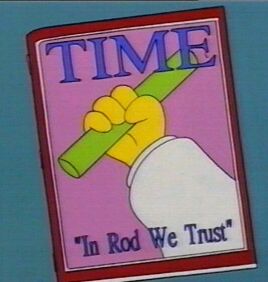Coinstar, proudly suing people for their movies since 2008
My loyal reader(s) who have been following this blog may recall that I called Coinstar a candidate for shorting . At the time it was at 25.91, and it is now at 36.15. So, that’s probably not my best work, although I maintain that the company’s return on its investments is too low to justify its prices. Anyone can spend 97 cents to earn a dollar; if they can do it with 87 cents I’m satisfied and if they can do it with 77 I’m intrigued.
Part of the runup was from the announcement that they reached an agreement to spend 80 million a year on Sony DVDs, and had a promising-looking earning announcement. A similar deal from Lions Gate films announced yesterday, though, failed to excite investors.
However, when Coinstar can’t reach an agreement they are perfectly willing to sue. They announced this morning that they were suing 20th Century Fox for not allowing their distributors to sell new releases to them for 30 days after they come out. This suit parallels an existing one against Universal Studios that was filed five months ago. The grounds for the suit is violation of antitrust law, which, although a lawyer, I’m not an expert in. Much of the law about trusts and monopolistic behavior is fairly nebulous and open to clever argument, but at least in the intellectual property field there seems to be enough articulated law to guide the investor.
 Antitrust laws in the US forbid generally any attempt to monopolize, and this includes attempting to maintain a monopoly by any means other than competition on the merits, including a refusal to deal with competitors. Assuming that some clever economist expert witness can conclude that this denial will harm competition, 20th Century Fox can still easily claim that they have the legitimate business reason of protecting the perceived value of their own products in the marketplace. There is broad support for the view that antitrust law permits holders of intellectual property to unilaterally refuse to license it. After all, the Constitution provides for temporary monopolies for patents and copyrights, and although this does not provide a blanket immunity for antitrust actions (just ask Microsoft), most legal commentators allow them to retain that monopoly as long as they do not try to leverage it into a non-monopolistic area, although the 9th Circuit has ruled that even this is permissible unless the owner is “not actually motivated by protecting its IP rights.†Since they have a legitimate business reason, which they seem to, they should be in a fine position for this suit. There is caselaw to suggest that there is a heightened standard for situations where a monopolist refuses to sell a product to one competitor that it makes available to others, or has done business with a competitor and then stops, but this seems to be more of an indicator of monopolistic action than anything imposing a higher legal standard, and a legitimate business reason will still defeat it. There is also case law to the effect that there is no difference between selectively granting a license and refusing to grant it all, so no worries to Fox and Universal on that front.
Antitrust laws in the US forbid generally any attempt to monopolize, and this includes attempting to maintain a monopoly by any means other than competition on the merits, including a refusal to deal with competitors. Assuming that some clever economist expert witness can conclude that this denial will harm competition, 20th Century Fox can still easily claim that they have the legitimate business reason of protecting the perceived value of their own products in the marketplace. There is broad support for the view that antitrust law permits holders of intellectual property to unilaterally refuse to license it. After all, the Constitution provides for temporary monopolies for patents and copyrights, and although this does not provide a blanket immunity for antitrust actions (just ask Microsoft), most legal commentators allow them to retain that monopoly as long as they do not try to leverage it into a non-monopolistic area, although the 9th Circuit has ruled that even this is permissible unless the owner is “not actually motivated by protecting its IP rights.†Since they have a legitimate business reason, which they seem to, they should be in a fine position for this suit. There is caselaw to suggest that there is a heightened standard for situations where a monopolist refuses to sell a product to one competitor that it makes available to others, or has done business with a competitor and then stops, but this seems to be more of an indicator of monopolistic action than anything imposing a higher legal standard, and a legitimate business reason will still defeat it. There is also case law to the effect that there is no difference between selectively granting a license and refusing to grant it all, so no worries to Fox and Universal on that front.
So, it would appear that Coinstar is facing an uphill battle in this area, and will probably have to deal with Universal and 20th Century Fox on their terms. And, now that those companies and the rest of the market know that Coinstar will go whining to the courts whenever it doesn’t get its way, one can imagine those terms will end up more restrictive than bargaining from a clean slate.
 Copper penny enthusiasts
Copper penny enthusiasts Inflation, of course, is simply an increase in the money supply that outpaces an increase in the size of the economy (actually, that’s stagflation, but stagflation is really the pernicious aspect of inflation). The purpose of money is to facilitate transactions, and as the number of transactions increases the size of the money supply should increase accordingly. Now, of course, the economy has shrunk even as all this stimulus is being thrown at the market, and we are still worrying about deflation. This implies one of two things, either that inflation is going to come later, or that the inflation has been avoided.
Inflation, of course, is simply an increase in the money supply that outpaces an increase in the size of the economy (actually, that’s stagflation, but stagflation is really the pernicious aspect of inflation). The purpose of money is to facilitate transactions, and as the number of transactions increases the size of the money supply should increase accordingly. Now, of course, the economy has shrunk even as all this stimulus is being thrown at the market, and we are still worrying about deflation. This implies one of two things, either that inflation is going to come later, or that the inflation has been avoided. Rayonier owns 2.6 million acres of timberland, and also produces lumber and wood products, and wood fibers for hygiene products and also specialty fibers for industrial use running the gamut from packaging to LCD displays. Naturally the decline in demand for construction materials has hurt them, but even at this low ebb of their business, they have managed to squeeze out at least $25 million in earnings per quarter lately. Their free cash flows are approximately equal to their dividends, currently yielding 5%. This puts them at risk of a dividend cut, but for inflation hedging purposes this is not really relevant, as it is better to keep the money in the firm to buy more timberland with in that event.
Rayonier owns 2.6 million acres of timberland, and also produces lumber and wood products, and wood fibers for hygiene products and also specialty fibers for industrial use running the gamut from packaging to LCD displays. Naturally the decline in demand for construction materials has hurt them, but even at this low ebb of their business, they have managed to squeeze out at least $25 million in earnings per quarter lately. Their free cash flows are approximately equal to their dividends, currently yielding 5%. This puts them at risk of a dividend cut, but for inflation hedging purposes this is not really relevant, as it is better to keep the money in the firm to buy more timberland with in that event. Rayonier also is getting a nice little bonus from the tax system this year from black liquor, a byproduct of the fiber refining process that contains the nonfibrous parts of the wood and the leftover chemicals used in the process. The refining of wood into wood pulp for their fiber business produces some nice long usable fibers, and a great deal of black slime. A highly toxic black slime. When dried, a highly flammable black slime. When dried and mixed with a bit of diesel fuel, a highly lucrative black slime, since the government pays a subsidy of 50 cents a gallon for its use under an alternative energy program. The program expires at the end of this year, and there is a movement in Congress to cut off the eligibility of pulp mills immediately, on the grounds that black liquor is not really an alternative fuel. (It has been used since the 30s and nearly every pulp mill uses it, meaning that it is not an “alternative” to anything.) To date this year, Rayonier has benefited $86 million from this subsidy, and there are two more quarters. Since the program will expire if not extended (which extension is not outside the realm of possibility), we cannot count on this $43 million a quarter as part of the firm’s operating income, but it is a nice little enhancement that will cushion the blow of the business slowdown for the moment.
Rayonier also is getting a nice little bonus from the tax system this year from black liquor, a byproduct of the fiber refining process that contains the nonfibrous parts of the wood and the leftover chemicals used in the process. The refining of wood into wood pulp for their fiber business produces some nice long usable fibers, and a great deal of black slime. A highly toxic black slime. When dried, a highly flammable black slime. When dried and mixed with a bit of diesel fuel, a highly lucrative black slime, since the government pays a subsidy of 50 cents a gallon for its use under an alternative energy program. The program expires at the end of this year, and there is a movement in Congress to cut off the eligibility of pulp mills immediately, on the grounds that black liquor is not really an alternative fuel. (It has been used since the 30s and nearly every pulp mill uses it, meaning that it is not an “alternative” to anything.) To date this year, Rayonier has benefited $86 million from this subsidy, and there are two more quarters. Since the program will expire if not extended (which extension is not outside the realm of possibility), we cannot count on this $43 million a quarter as part of the firm’s operating income, but it is a nice little enhancement that will cushion the blow of the business slowdown for the moment. USEC Inc. has an interesting one; a loan guarantee from the Department of Energy that they applied for in order to construct a new facility. USEC is currently the only uranium refinery operating in the United States. It turns mined uranium into low enriched uranium for use in nuclear power plants, and presently employs archaic and inefficient gaseous diffusion technology. Ironically, one of the biggest inputs to producing fuel for electric plants is electricity; 65% of USU’s operating costs come from electricity, and centrifuge technology requires an impossible-seeming 95% less power. For this reason, most nuclear fuel enrichers have switched over to centrifuge technology, and USU wants to open a new plant in order to join them.
USEC Inc. has an interesting one; a loan guarantee from the Department of Energy that they applied for in order to construct a new facility. USEC is currently the only uranium refinery operating in the United States. It turns mined uranium into low enriched uranium for use in nuclear power plants, and presently employs archaic and inefficient gaseous diffusion technology. Ironically, one of the biggest inputs to producing fuel for electric plants is electricity; 65% of USU’s operating costs come from electricity, and centrifuge technology requires an impossible-seeming 95% less power. For this reason, most nuclear fuel enrichers have switched over to centrifuge technology, and USU wants to open a new plant in order to join them. A yield hog is, simply enough, an investor who is dazzled by high yield investments. A big fat coupon impresses investors and also serves to erase a few embarrassing mistakes. In fact, an investment that produces a large cash flow that is reasonably safe is the kind of low-hanging fruit that the investor should be seeking out. The emphasis, though, is on “reasonably safe,” whereas a yield hog sees “large cash flow” and stops reading. They are willing to reach for yield, and either get it by ignoring established standards of investing safety, or worse, they make up new standards that show that what they’re doing is now safe.
A yield hog is, simply enough, an investor who is dazzled by high yield investments. A big fat coupon impresses investors and also serves to erase a few embarrassing mistakes. In fact, an investment that produces a large cash flow that is reasonably safe is the kind of low-hanging fruit that the investor should be seeking out. The emphasis, though, is on “reasonably safe,” whereas a yield hog sees “large cash flow” and stops reading. They are willing to reach for yield, and either get it by ignoring established standards of investing safety, or worse, they make up new standards that show that what they’re doing is now safe.